Middle East Travels
Twenty-three years ago, In the spring of 2001 Lilli and I were invited to visit our friends, the Friedrichs, who had recently moved to Dubai, capital of the United Arab Emirates, from our home town, Arlington, Virginia. For me, it was a chance to check up on my new godson while my piano students were on Spring Break. For Lilli, who was working in Boston, it was an opportunity to visit Beirut, Lebanon, and reconnect with some architects she had known in graduate school at Harvard. Having lived in Istanbul for the summer of 1967, I was eager to see more of that part of the world. Fortunately, we traveled in early April, five months before September 11, when travel in general and the Middle East in particular became much more complex.
Dubai, United Arab Emirates
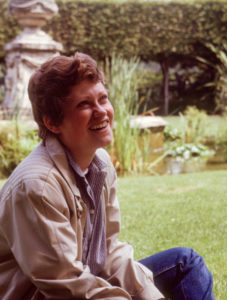
Our friendship with the Friedrich family began in August 1979, when Beatrice Shenouda, a young student from Germany, lived with our family as part of the Experiment in International Living, the organization that had arranged my homestay in Austria in 1965. Steve and I believed that hosting exchange students would expose our three young children to a wider world. Beatrice was our first and she was a gem; we vowed to stay in touch with each other. Seven years later she came to visit us when we were staying at a friends house in Grasse, France. Then, in 1995 she married Jürgen Friedrich. Their daughter Florentine was born March 16, 1997. That fall, Jürgen was posted to the German Embassy in Washington DC and they rented a house near us in Arlington, Virginia. With our kids all grown and gone, we loved getting to know Bea’s family. She soon became a valued member of my Reading Friends group.
On July 20, 2000, the Friedrichs’ son, Jasper, was born at Sibley Hospital in Washington DC. Later that summer, Jürgen was transferred to Dubai to lead Germany Trade and Invest. When Jasper was baptized in September, I was named his godmother. In October 2000, the family moved to Dubai, where they lived for the next seven years.
To embark on the 7,000 mile journey to Dubai, in April 2001, Lilli and I booked our flight from Philadelphia, where David, who was in his first year at Wharton Business School, saw us off. At a layover at Charles de Gaulle airport we got to see Paris friends Edith Schmidt LePechon (oldest sister in the family I had lived with in Austria), her daughter Francine LePechon Joubert, and her grandson, 8-month-old Thomas Joubert. When we finally arrived at the super-modern airport in Dubai, Jürgen and Bea met us and took us to their beautiful home. What a joy it was to see members of Familie LePechon and Familie Friedrich the same day!
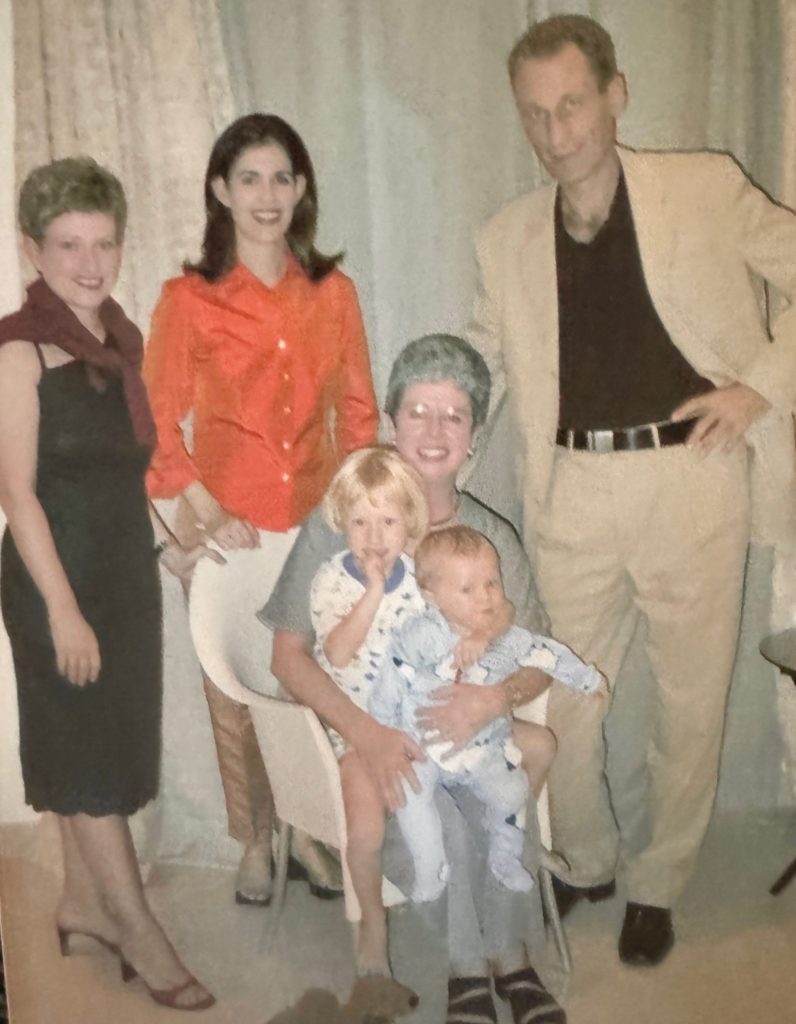
Jasper was now nine months old; Florentine had just turned four. Their live-in nanny enabled Bea and Jürgen to show us their new city. I remember the thrill of seeing the Arabian Gulf (aka Persian Gulf) for the first time. We visited a charming history museum and an amazing shopping mall. This short video about Dubai, provides a brief history of a city known chiefly for pearl diving until oil was discovered in the late 1960s. Founded in 1971, Dubai became one of the fastest-growing cities in the world. Lilli especially liked seeing a recently-completed luxury hotel that had been featured in Architectural Digest. Look closely on the left of the next photo to see its tower in the distant background of the camel racing course Jürgen took us to see. He even managed to give us a peek at the Emirates Golf Club where the Dubai Desert Classic tournament continues to attract world-class golfers.
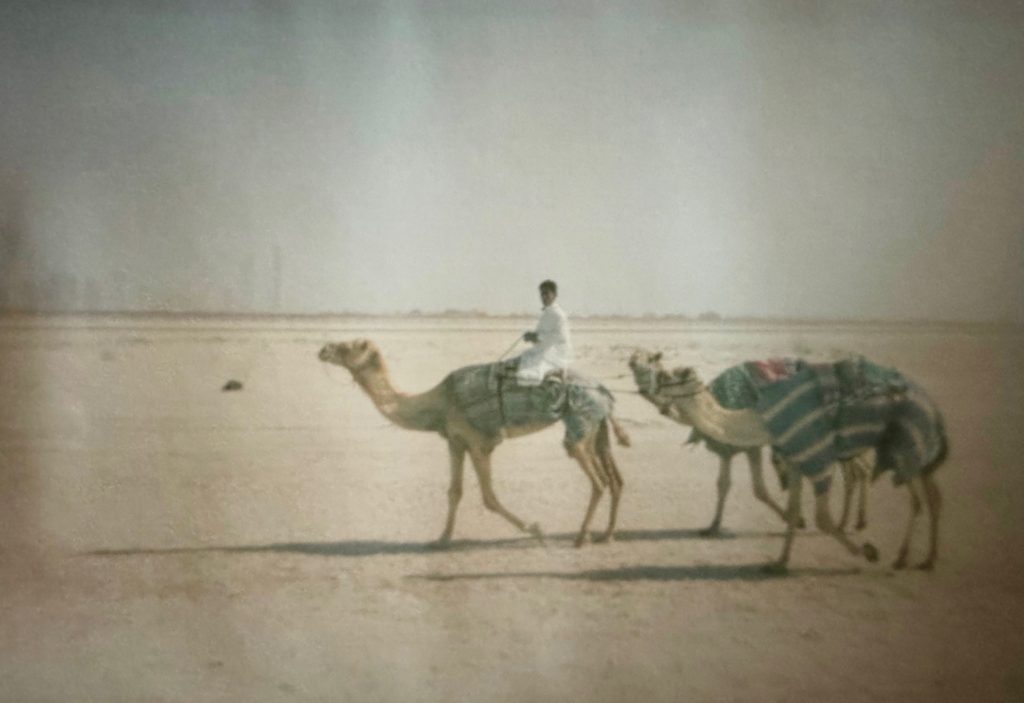
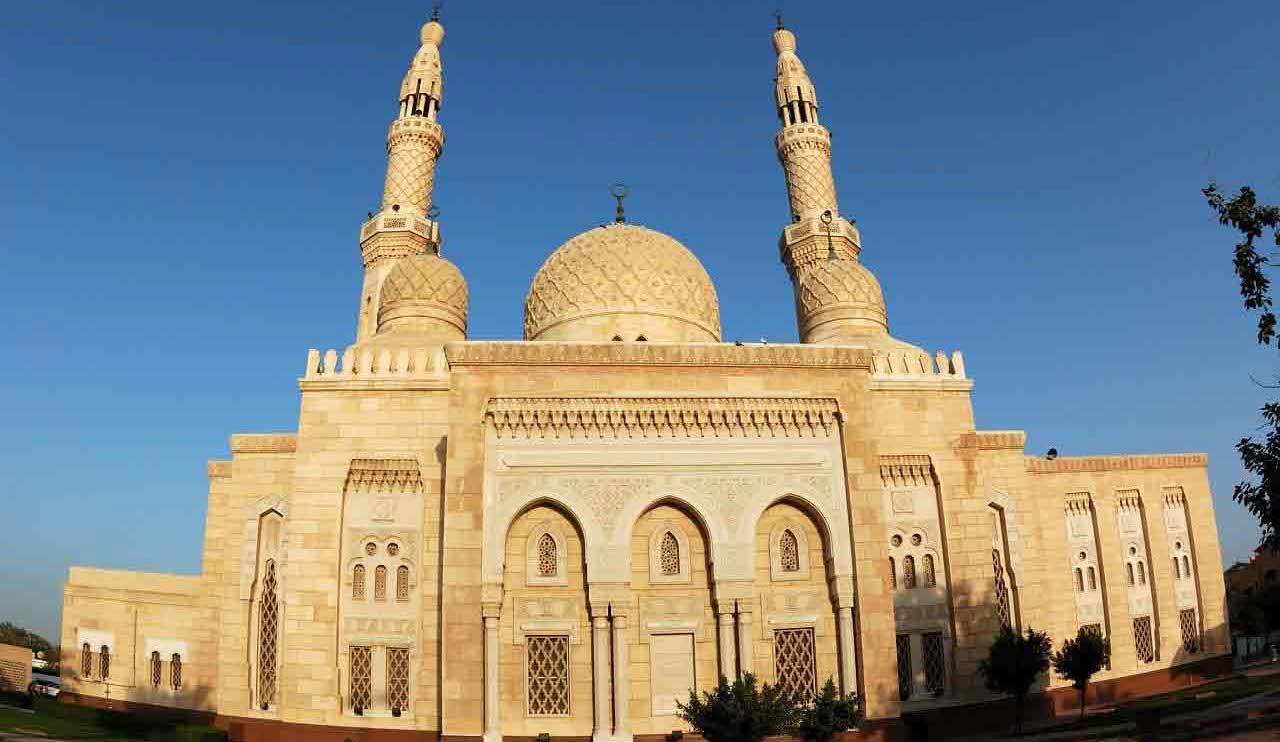
Jumierah Mosque is one of the most popular mosques in Dubai because its picture adorns the 500 dirham bank note. It is also one of only three mosques in the UAE that admits non-Moslems and women. This was our first time to visit a mosque. We put on our headscarves and were very quiet, but couldn’t help but notice that each man we encountered paused his prayers until after we had passed.
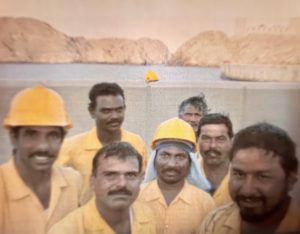 One of Jürgen’s jobs at Germany Trade and Invest was to find partners that were required for foreign investors. For example, he found a partner for Germany’s Steinway Pianos. Down at the port, I chatted briefly with these workers and found out that they were from India, as was the Friedrich’s nanny. As of 2021, the Indian expatriate community is the largest ethnic community in UAE, or about 30 per cent of the country’s population of 9.4 million. Though we observed many elegantly dressed shoppers at the Mall who may have been natives, I don’t recall meeting a single Emirates citizen.
One of Jürgen’s jobs at Germany Trade and Invest was to find partners that were required for foreign investors. For example, he found a partner for Germany’s Steinway Pianos. Down at the port, I chatted briefly with these workers and found out that they were from India, as was the Friedrich’s nanny. As of 2021, the Indian expatriate community is the largest ethnic community in UAE, or about 30 per cent of the country’s population of 9.4 million. Though we observed many elegantly dressed shoppers at the Mall who may have been natives, I don’t recall meeting a single Emirates citizen.
Al Ain, United Arab Emirates and Muscat, Sultanate of Oman
Jasper came down with a cold just as Jürgen and Florentine embarked on a trip to Muscat, Oman. While we drove through long stretches of Rub al Khali, a part of the great Arabian Desert, Florentine entertained herself with Pokemon cards (the first edition of those that now fascinate my granddaughters Margot and Nina). I believe it was Al Ain, UAE, where we spent the night, but I’m not sure, because I don’t recall seeing the Al Ain Oasis, a World Heritage Site. I took this photo the next morning. The dry air reminded me of West Texas, but the architecture was unlike anything I’d ever seen. Calls for prayers from the mosque reminded me of Istanbul.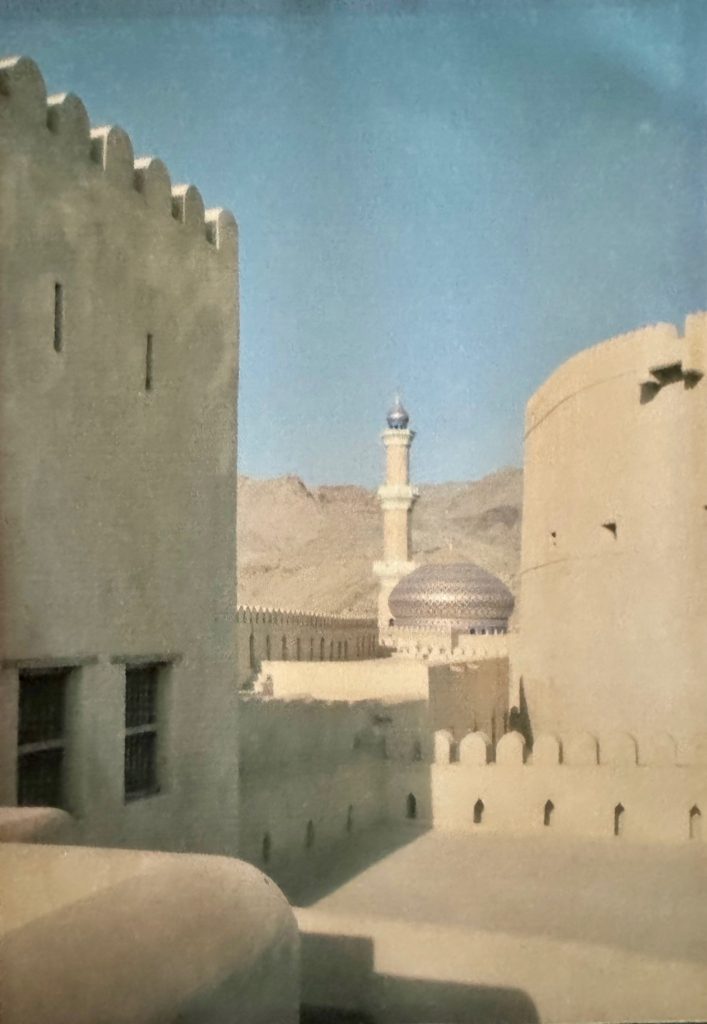 Ever since I had gone to the Embassy of the Sultanate of Oman in Washington to get the necessary visa, I had been looking forward to seeing Muscat, the capital of Oman. As we approached from the north along the coast of the Gulf of Oman, the highway was lined with thick borders of colorful flowers, a sharp contrast to the surrounding desert. This wondrous display heightened our anticipation.
Ever since I had gone to the Embassy of the Sultanate of Oman in Washington to get the necessary visa, I had been looking forward to seeing Muscat, the capital of Oman. As we approached from the north along the coast of the Gulf of Oman, the highway was lined with thick borders of colorful flowers, a sharp contrast to the surrounding desert. This wondrous display heightened our anticipation.
Muscat was indeed a bustling city. We stopped briefly at a huge market bursting with gold jewelry and carpets. I bought a small quantity of myrrh, the gift one of the Magi had brought to the infant Jesus. I burn some every year on January 6, Three Kings Day. It was obvious that Oman society treated men and women differently. At a Muscat restaurant we were shown to a separate room where women could dine without distracting the mostly male clientele. We sat on comfortable rugs and cushions. The food was Mediterranean and delicious.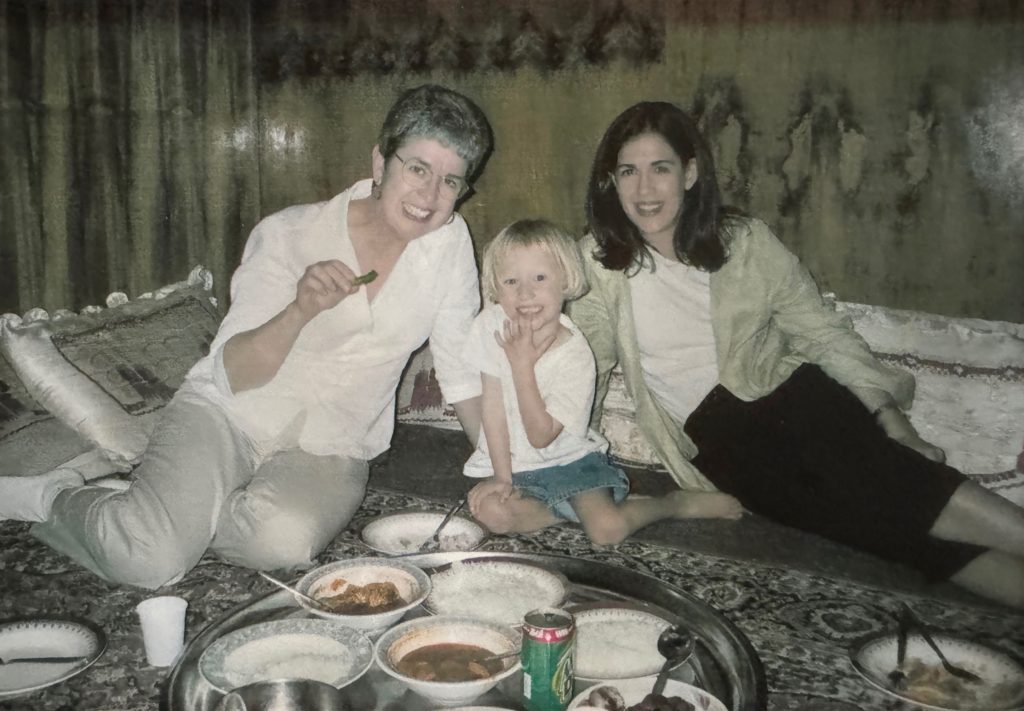 When we returned to Dubai, we were glad to find Jasper feeling better. On the last night of our visit Bea and Jürgen hosted a wonderful cocktail party that included my cousin Jerry’s daughter, Janna Raiza Fjerstad and her husband Paul, who was working for a large oil company in Dubai. Janna and Paul met when studying Petroleum Engineering at Texas A & M; Lilli and I had attended their wedding in Dallas years before. The weather during our stay was temperate, but when we departed on April 8, the thermometer registered 104 degrees Fahrenheit! Thank you once more, Bea and Jürgen, for inviting us at just the right time and sharing your lovely new home and city with us.
When we returned to Dubai, we were glad to find Jasper feeling better. On the last night of our visit Bea and Jürgen hosted a wonderful cocktail party that included my cousin Jerry’s daughter, Janna Raiza Fjerstad and her husband Paul, who was working for a large oil company in Dubai. Janna and Paul met when studying Petroleum Engineering at Texas A & M; Lilli and I had attended their wedding in Dallas years before. The weather during our stay was temperate, but when we departed on April 8, the thermometer registered 104 degrees Fahrenheit! Thank you once more, Bea and Jürgen, for inviting us at just the right time and sharing your lovely new home and city with us.
Visiting Lebanon with the help of the Nuchos
How lucky we were to know Roger and Leslie Nucho, fellow members of the Cherrydale Choir whose daughters, Jessie and Jamie, studied piano with me. Leslie worked for Amideast in Washington, a non-profit devoted to education and development in the Middle East. Roger had grown up in Lebanon and his parents still lived not far from Beirut. Winnie and Charlie Nucho helped us plan our trip, procured a guide, and met us at the airport. I must have caught Jasper’s cold, because I arrived with a stuffy nose and a slight fever. They quickly directed me to a pharmacist near our hotel, who provided the medication I needed..
The next day we met our guide, who took us to the Nucho’s lovely farm in Hamanna. As I remember, Charlie’s family had come there from the East early in the 20th century, traveling on camels. His son Roger relayed this pleasant memory:
I recognize the patio in the background of your photo as being part of our house in the mountains in the village of Hammana. From where you are standing in the picture, if the weather was clear, you would be looking at a fabulous panoramic view towards the valley, with wonderful sunsets that Leslie and the girls have taken many pictures of, and which I enjoyed every summer during the first two decades of my life. It was a wonderful place to grow up, and I retain many lovely memories of that time. I am glad that Leslie and the girls were able to get a taste of it.
Charlie told us about how during the Six-Day War in 1967, helicopters had landed in that valley bringing casualties. He was a doctor who treated the injured no matter which side they were on. A few years later, Charlie died and Winnie came to live near Roger and his sister in Northern Virginia. I would often see her at our church, Cherrydale United Methodist.
Our 3 B’s in Lebanon: Baalbek, Byblos and Beirut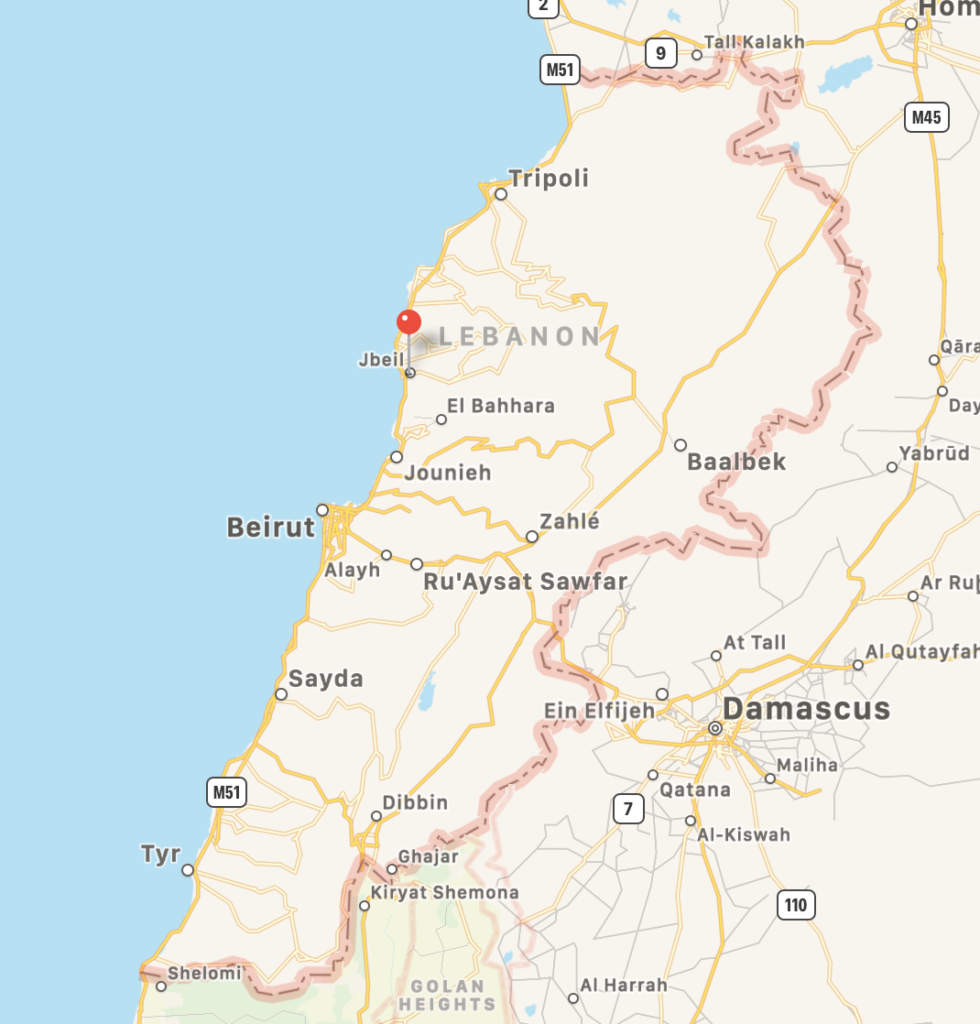 Our guide gave us a brief overview of the 6,000 year history of Phoenicia as a center for trade and commerce. As you can see on the map, Beirut is an ideal location for exchanging goods from a wide area. I kept seeing a lot of people who looked like Eli Awad, a Lebanese-American who owned my favorite hair salon in Arlington. While getting my hair cut, I had observed him and his brother, who owned the camera shop next door, having discussions that revealed hints of their gift for commerce.
Our guide gave us a brief overview of the 6,000 year history of Phoenicia as a center for trade and commerce. As you can see on the map, Beirut is an ideal location for exchanging goods from a wide area. I kept seeing a lot of people who looked like Eli Awad, a Lebanese-American who owned my favorite hair salon in Arlington. While getting my hair cut, I had observed him and his brother, who owned the camera shop next door, having discussions that revealed hints of their gift for commerce.
- Baalbek, in the east, was where the ancient Phoenicians erected an enormous temple to their sky god, Baal. As we walked around the site, I tried to imagine worshipping a tribal god and found myself wanting to dance. Wish I had had my iPhone camera then, so I could show you that lovely place.
- Byblos, also known as Jbell, is marked by the red pin on the map. Because papyrus was one of the principal articles in its trade, the Greeks took the name of the city as their word for book – biblos – and from their word for books named our Bible – ta biblia – which means ‘the books’. I recalled singing Ernest Emurian’s songs about the 66 books in the Bible–39 in the Old Testament and 27 in the New Testament.
- Beirut bustled with energy. Lilli met up with several friends she had known in Cambridge and we had dinner at a wonderful restaurant in a recently restored block of the city. We were lucky to be there during a peaceful period. In some sections we saw remnants of buildings in which people lived with only curtains between them and the street. After 9/11 there was more violence and just last year the city experienced a major earthquake.
Our guide took us all around the city. At one point a sign indicated that we were on the road to Damascus, Syria and I thought of the Apostle Paul and the revelation he had on that road. We drove us north to see the Cedars of Lebanon, mentioned in Psalm 92 verse 12: “The righteous will flourish like a palm tree, they will grow like a cedar of Lebanon.” For 5,000 years a parade of civilizations has praised the cedars of Lebanon, and then chopped them down. Only 17 square kilometres, 0.4 percent of the estimated ancient cover, of cedars remain in Lebanon today. But the name lives on as a title for a hospital in Miami, a State Park in Tennessee, and two lovely trees at Farmington Country Club in Virginia. My favorite photo from our tour shows me with Lilli at Pigeon Rocks off the coast of Raouché.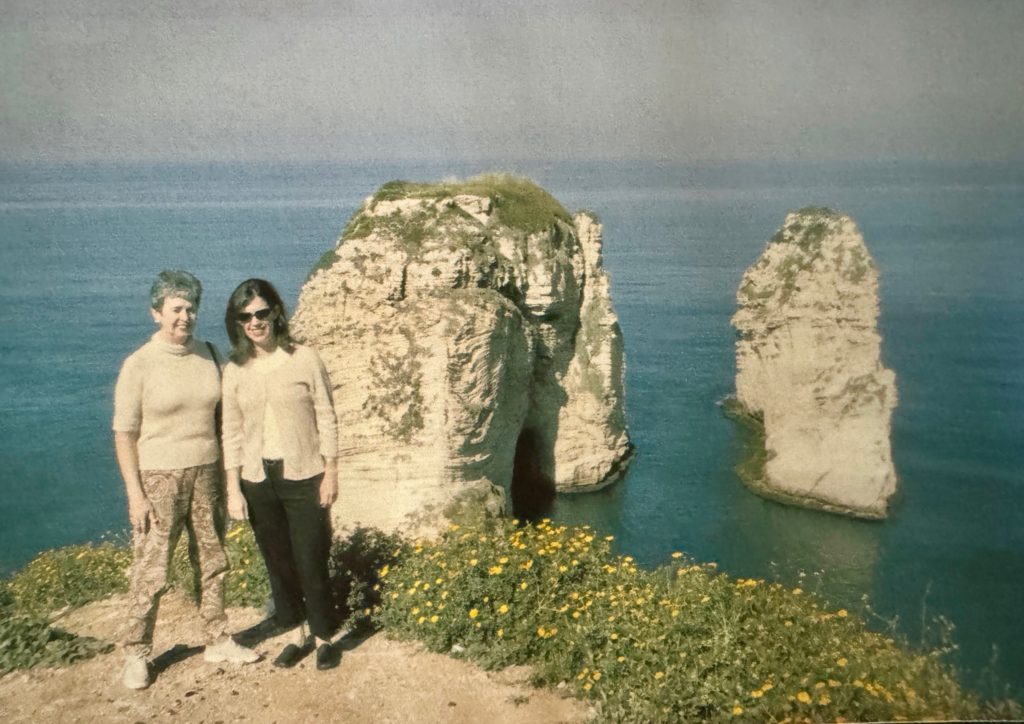 Traveling in the Middle East in April 2001 gave us timely insight about an area that jumped to the center of everyone’s attention that fall. When I pray for safety and peace, I think of the people we met there who were striving for just that. I remain very grateful to the Friedrichs and the Nuchos for welcoming us so warmly and to Lilli for journeying with me and preserving the best pictures. I look forward to staying in touch with these beloved friends.
Traveling in the Middle East in April 2001 gave us timely insight about an area that jumped to the center of everyone’s attention that fall. When I pray for safety and peace, I think of the people we met there who were striving for just that. I remain very grateful to the Friedrichs and the Nuchos for welcoming us so warmly and to Lilli for journeying with me and preserving the best pictures. I look forward to staying in touch with these beloved friends.
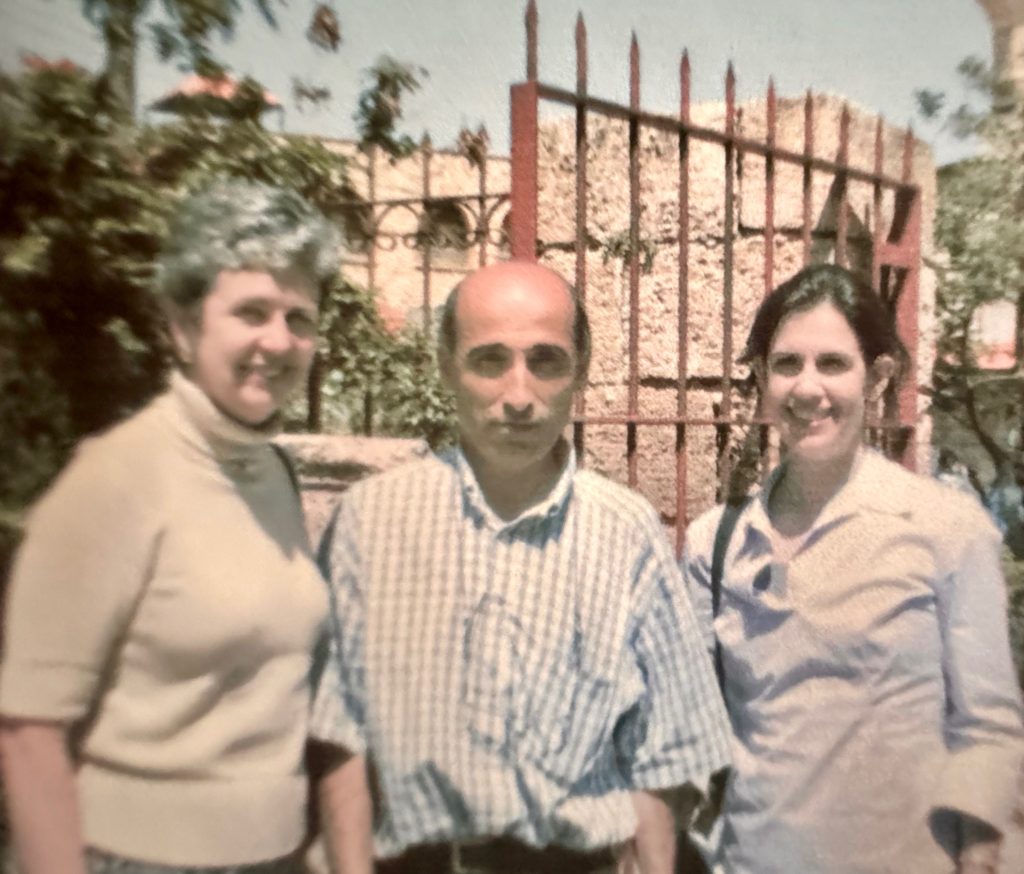
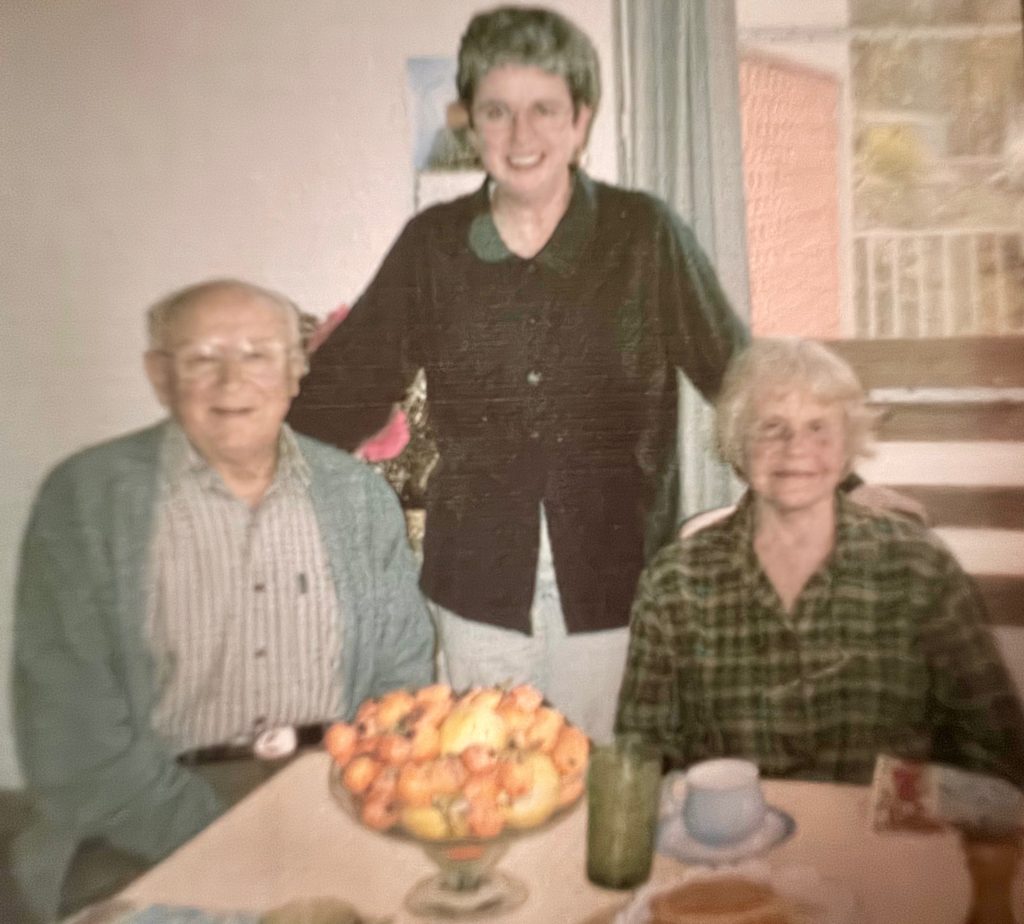
Leave a Reply